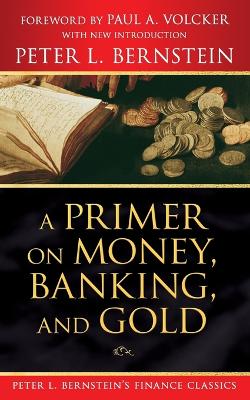Peter L. Bernstein's Finance Classics
3 primary works
Book 5
A Primer on Money, Banking, and Gold (Peter L. Bernstein's Finance Classics)
by Peter L. Bernstein
With the proliferation of financial instruments, new areas of instability, and innovative capital market strategies, many economists and investors have lost sight of the fundamentals of the financial system—its strengths as well as its weaknesses. A Primer on Money, Banking, and Gold takes you back to the beginning and sorts out all the pieces.
Peter Bernstein skillfully addresses how and why commercial banks lend and invest, where money comes from, how it moves from hand to hand, and the critical role of interest rates. He explores the Federal Reserve System and the consequences of the Fed's actions on the overall economy. But this book is not just about the past. Bernstein's novel perspective on gold and the dollar is critical for today's decision makers, as he provides extensive views on the future of money, banking, and gold in the world economy.
This illuminating story about the heart of our economic system is essential reading at a time when developments in finance are more important than ever.
Book 8
Economist on Wall Street (Peter L. Bernstein's Finance Classics)
by Peter L. Bernstein
Peter Bernstein's Economist on Wall Street is a collection of writings from 1955 to 1970. The book is especially interesting because so many of Bernstein's observations reflect the most important issues of the present—the outlook for inflation and its control, the intricacies of monetary policy, the future of the dollar, and the dilemmas of household finances. Bernstein was also concerned with developments in portfolio management, including the new influence of institutional investors and rules for optimal asset mixes. He provides light touches, too, as he indulges in fantasies and philosophical musings over a wide variety of topics.
With so many years of hindsight, we should not be surprised to find some of Bernstein's predictions running awry. But why? In each instance, these forecasts were biased by memories of the past. There is a big lesson to be learned there.
Economist on Wall Street is a remarkable book, with lasting relevance and keen insights into the art of investment management, the capital markets, gold and the dollar, and the fun of being alive.
Book 10
As Bernstein shows how to navigate an ever-changing economic landscape, his timeless insights throughout these pages make The Price of Prosperity as vital and important today as when it appeared in an environment fundamentally different from our own.


